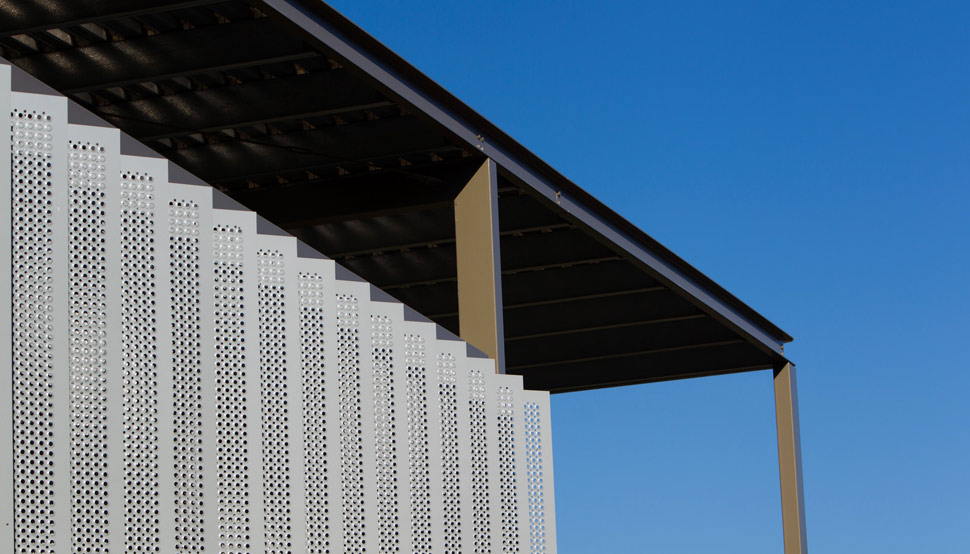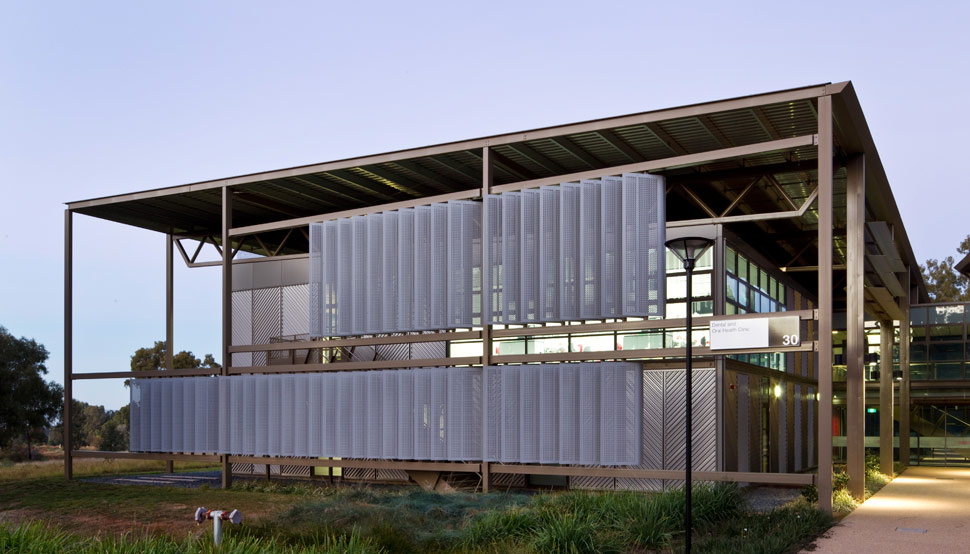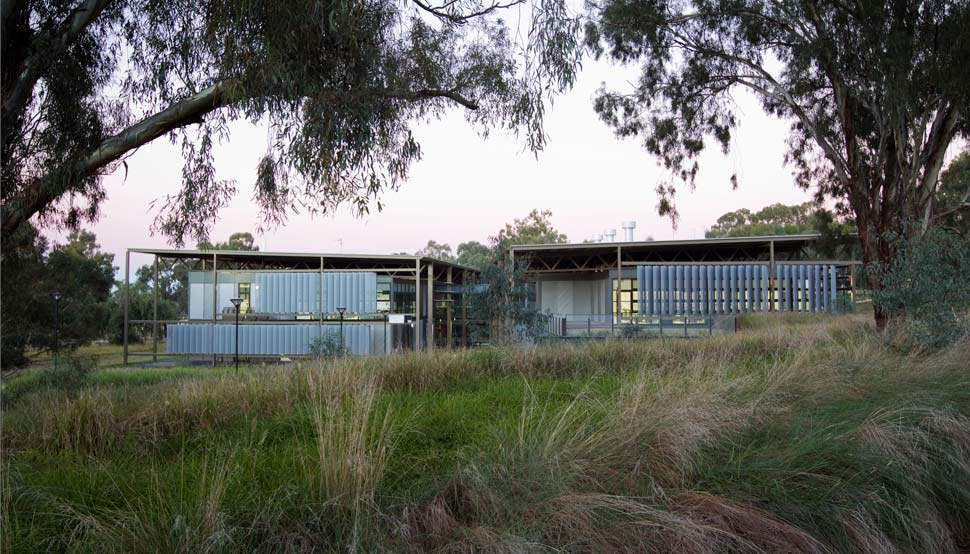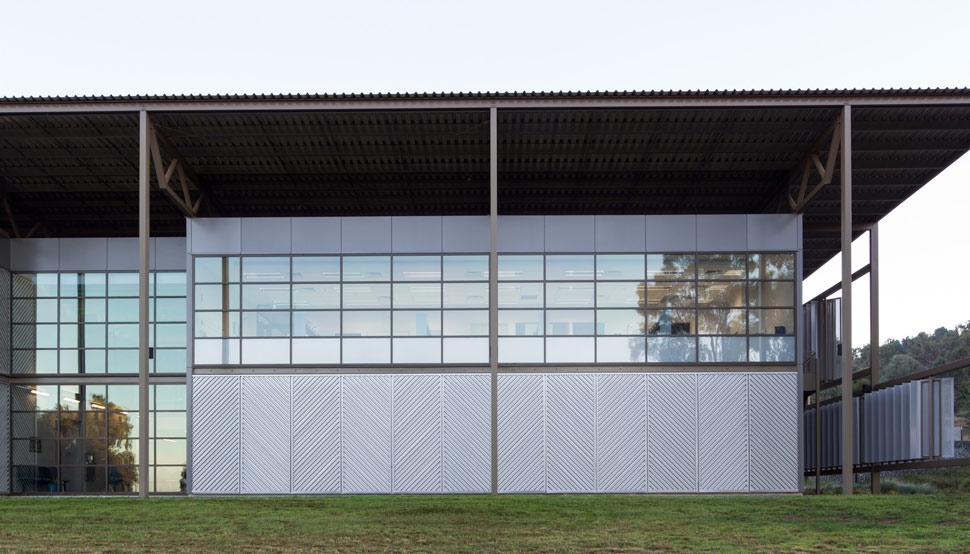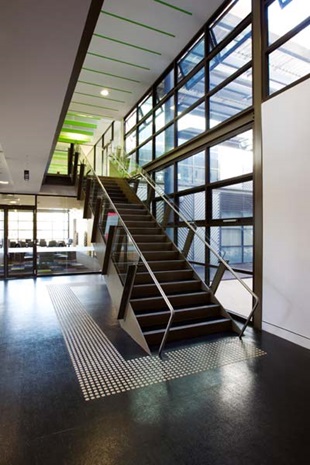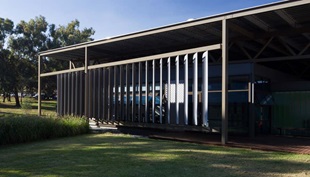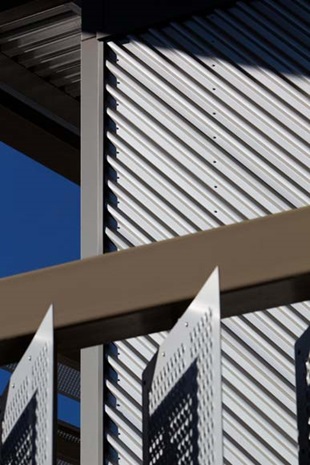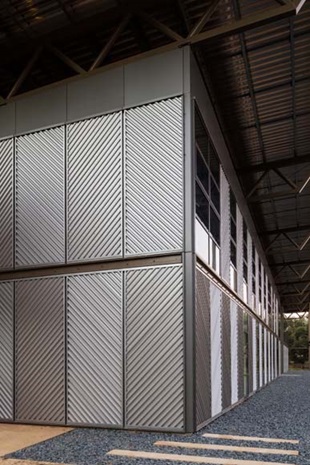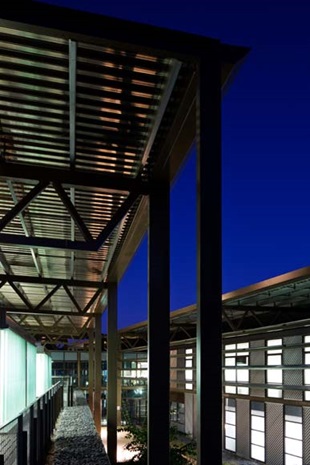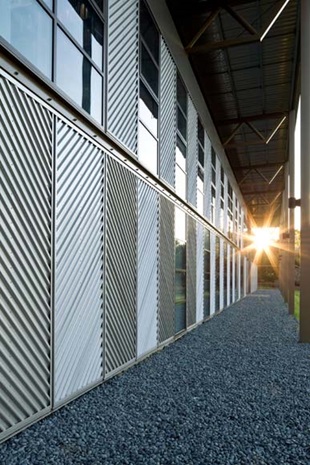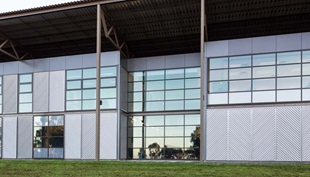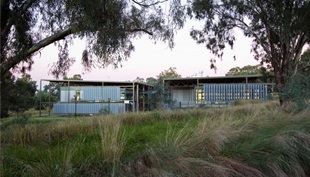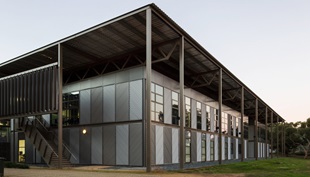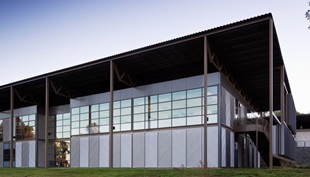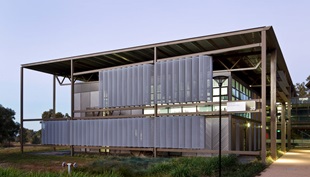Charles Sturt University's School of Dentistry
Brewster Hjorth Architects’ design for Charles Sturt University’s School of Dentistry at Wagga Wagga admirably embodies the building’s purpose and location.
Credentials:
Client: Charles Sturt University, Wagga WaggaLocation: Wagga Wagga, NSW
Architect: Brewster Hjorth Archiects
Project Team: Design Director: Ian Brewster, Project Architect: Vicki Rushton
Builder: Joss Constructions
Fabricator and Shop Drawing Contractor: Rambler Welding
Cladding Contractor: Hadfield Industries
Landscape Architects: Place Design
Awards: 2010 Australian Institute of Architects NSW COLORBOND® Award for Steel Architecture
Building Size: 3,300m2
Total Project Cost: $15.6 million
A design for Charles Sturt University’s School of Dentistry at Wagga Wagga admirably embodies the building’s purpose and location.
While some people approach a trip to the dentist with trepidation, a visit to this school and clinic makes a welcome exception for those who appreciate incisive architecture. Principal architect Ian Brewster of Brewster HJorth explained that his vision for the building’s design was shaped by two central ideas.
“Firstly, it had to identify with dentistry, which has a very controlled, mechanistic approach to performing work – as can be seen in the school’s student labs,” he said. “We aimed to capture some of that inculcated precision of high technology and infuse it in the building.
“We were also mindful that it was going on a largely untouched bushland site in a semi-rural area, so we wanted it to hark to the rural and draw on the Australian bush aesthetic.”
The building successfully reconciles these themes, simultaneously revealing simple rustic structure and more intricate, plant-like qualities.
Brewster said the commission to design the school came with an extremely short timeframe. “An ability to quickly design and build was a big part of the prerequisites. Timeframe was a massive challenge and dictated our material selection considerably.
“We needed something that could be controlled off-site and would be very quick and easy to erect,” Brewster adds. “We knew a number of expert steel fabricators in the area, and of course it could be simply shipped in, so we chose steel to construct much of the building and I think the results demonstrate we made the right choice.”
Steel was also the perfect material to help express the project’s key visions.
“The building’s steel structure and cladding was envisaged from the beginning as an essential component of its rural, yet hi-tech imagery,” he said.
“Dentistry evokes metallic and mechanical imagery – such as stainless steel implements and properties such as hardness, cleanliness and precision. We thought that steel was appropriate for representing these things in the building, especially being a very exacting material with fine tolerances.
“It is also evocative of rural sheds and the shelter they give from the harsh landscape. Steel sheds are such an established part of the Australian bush that they are somehow native to it. There’s an emotional history there that we also tried to draw on. So it was fortunate that steel was a great way to express the nature of dentistry as well as form a relationship to the rural environment.”
The building has two main pavilions, each of which possesses several layers that present as a series of permeable veils. A fine structural frame made from BlueScope Steel hollow section columns and trusses provides a frame for the roof and also for fixing perforated metal sunshading panels. These fins are offset vertically to the east and west, and horizontally to the north. The foremost roof overhangs provide additional sun-shade for the free-standing building components below.
The pavilion walls are protected by LYSAGHT SPANDEK® profile cladding made from COLORBOND® Metallic steel in the colour Cortex®. These panels are fixed with the profile running at opposing 45-degree angles, creating an alternating pattern.
Sitting on the gabion base is a finer “articulated machine”, made of steel and glass, which encloses the interior. Above these buildings soars the primary roof. “The idea of the steel-framed box and roof is to protect the interior buildings, which are separated from the box,” Brewster explains. “The box is a container for the more precious machine that resides under it. There’s a rougher, more rural feeling to materials and finishes used for the protecting parts and a more refined elegance to the inner protected areas, but we think they work well together.”
The same material chosen to build the primary roof also tops the underlying pavilions: PERMALITE ALSPAN® made from marine-grade aluminium alloy, for which the architect was able to obtain an enduring warranty. “We were able to achieve a clear span with the roof trusses and we also really liked the material’s aesthetic,” he says of the PERMALITE ALSPAN®.
This double-skin ventilated roof – which is complemented by the extensive sun shading, enhanced insulation, fan-induced thermal chimneys and controlled purging – is the main device for achieving the building’s environmental success.
Steel mesh wraps around the vertical spaces between the roofs, keeping out animals and flora, yet allowing air to breathe between the levels. Even in the absence of wind, airflow is induced by heat.
While not officially certified, there’s no second-guessing the building’s credentials when walking into its wonderfully fresh and shaded northern pavilion. It’s so incredibly cool that the reality of its entirely passive air-conditioning defies belief.

